The most important development after the last poll is the decision of the gold initiative to actively fight against the SNB’s minimum euro rate.
[corrected version, see the comments below]
What are the reasons:
The proponents have realized that discussion very much focused on the condition that the SNB must hold at least 20% gold. This implies it needs to buy around 1600 tons of gold with “printed money”, if it wants to maintain the euro floor. If the central bank manages to sell the euros and dollars one remote day in the future [what some pro-SNB “financial experts” consider possible], then masses of gold would remain on the SNB balance sheet and cannot be sold. In 2013, the initiative proponent Lukas Reimann was confronted with this argument already and he replied that the SNB has also the possibility to sell half of its fiat currencies.
The idea is simple: the SNB should sell euros and other fiat currencies in the coming five years and buy gold with the proceeds. This will solve the potential issue of the “unsellable gold”.
Twitter is the communication channel to target those often intelligent people that have an issue with “unsellable gold”. The proponents want to win them back by saying the biggest mistake is to peg to the euro, to a failed currency. This change in strategy becomes visible in their ad-financed Twitter campaign, here is the link to their Twitter profile.
The promoted tweet: “Gold unsaleable? The euros are unsaleable!”. This advert appears on the top of the timeline when most Swiss log into Twitter.
Gold unverkäuflich? Die Euros sind unverkäuflich! #GoldInitiative #srfarena
— Gold-Initiative (@gold_initiative) November 14, 2014The euro and dollar bomb shell, highly speculative foreign currencies behind the Swiss franc to be replaced by gold backing.
Wenn Zentralbanken unkontrolliert Papiergeld drucken, werden die Reichen reicher - der Rest verarmt. #GoldInitiative pic.twitter.com/yX1tQyLyE7
— Gold-Initiative (@gold_initiative) Statt auf sicheres Gold setzt die SNB lieber auf spekulative Fremdwährungen wie Euro und US-Dollar.
#Goldinitiative pic.twitter.com/Ys3zNCaiq2
— Gold-Initiative (@gold_initiative) November 26, 2014Another one showing the euros sink, while the gold ship prevails.
Statt Freiheit und Wohlstand drohen der Schweiz nun die Probleme der EU: Stagnation und Zentralismus.
#Goldinitiative pic.twitter.com/BH2J6dbPc5
— Gold-Initiative (@gold_initiative) November 26, 2014The next claim is for social responsibility: the SNB wants to help the rich and fight the poor.
“When central banks print money then the rich get richer and the poor poorer!”
It shows the Piketty split, also visible in the voting intentions by income group in the poll.
Wenn Zentralbanken unkontrolliert Papiergeld drucken, werden die Reichen reicher - der Rest verarmt. #GoldInitiative pic.twitter.com/yX1tQyLyE7
— Gold-Initiative (@gold_initiative) November 14, 2014
@gold_initiative Swiss Gold initiative song composed by Tony Lewis for the Swiss youth to get all their "Yes" votes. https://t.co/3gWsPM2U6d
— Ludovic Malot (@LudovicMalot) November 14, 2014Tags: Referendum




















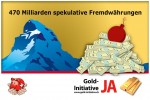
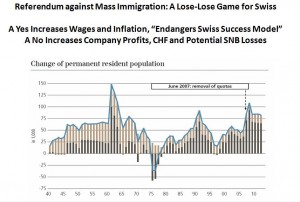
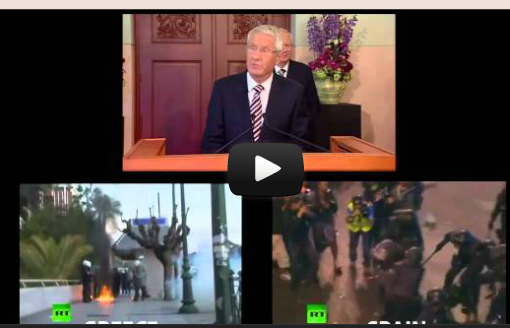
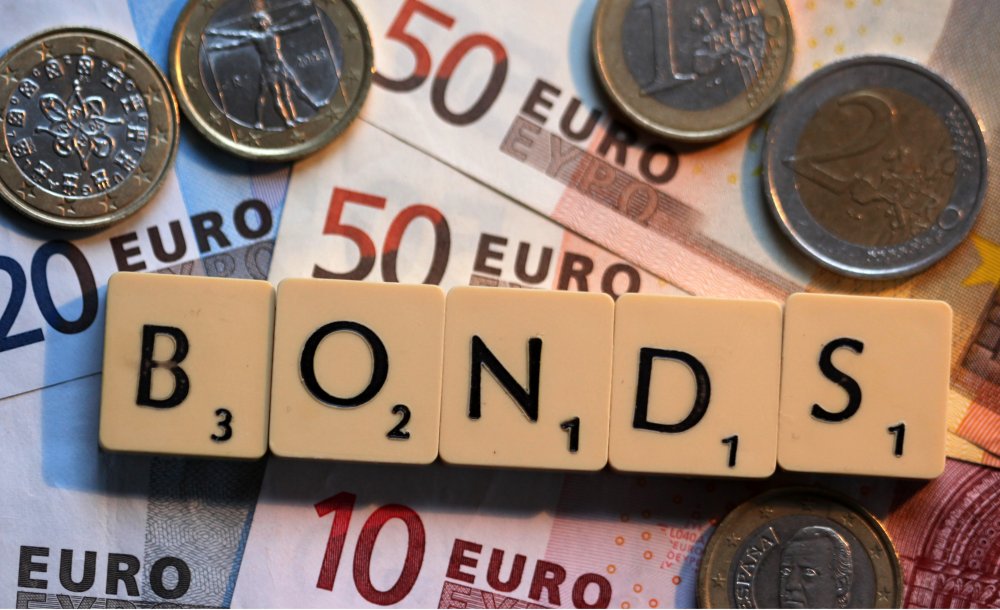

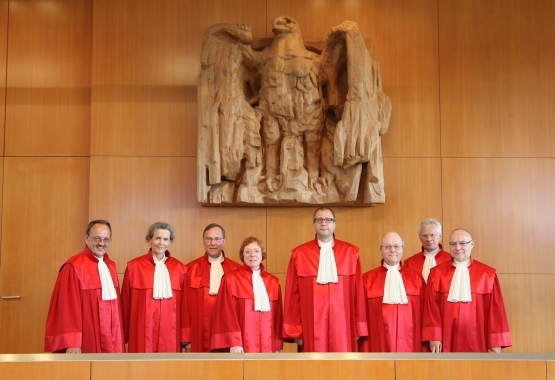

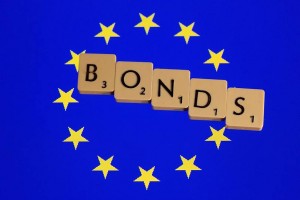
3 comments
kleingut
2014-11-20 at 10:35 (UTC 2) Link to this comment
“The proponents have
realized that they introduce a very severe constraint: Namely that the
SNB must hold at least 20% gold. This implies it needs buy 1580 tons of
gold with printed money, if it maintains the euro floor.
If the central bank manages to sell the euros and dollars one remote day
in the future [what some pro-SNB “financial experts” consider
possible], then masses of gold would remain on the SNB balance sheet and
cannot be sold”.
Only now have the proponents realized that? Well, better late than never but it doesn’t really speak to the competence of the proponents not to have been aware of that from the start. If I understand correctly what the proponents aim to achieve, the proper measure would be to limit the SNBs balance sheet total to a percentage of GDP. Presently, it is about 80% of GDP, if not more. That smacks of a world record. Even though the Fed has dramatically blown up its balance sheet in the last years, I believe it still ranges between 20-30% of GDP. The ECB is presumably much lower.
GeorgeDorgan
2014-11-21 at 10:04 (UTC 2) Link to this comment
@kleingut My bad, my formulation was wrong. Already in 2013, Lukas Reimann was confronted with this argument and he replied that the SNB has also the possibility to sell fiat currencies. I will correct the formulation. The correct way of saying it is not “the proponents realized” but “the opponents focused on”
kleingut
2014-11-21 at 10:50 (UTC 2) Link to this comment
With which argument was Reimann confronted? With the one about limiting the size of the SNBs balance sheet? Once the size of a Central Bank’s balance sheet is limited, it becomes really constrained in everything it does. Whether or not that is a good idea I don’t know but, for sure, it would achieve the aims of the proponents.
Strictly technically speaking, the Gold-Initiative doesn’t limit the SNB in anything it does except that it has to repatriate the gold. There is no technical limitation in the SNBs buying FX or gold. All it needs to do is to credit the seller’s sight balance at the SNB with CHF (i. e. print CHF, or increase base money). It can buy as much FX as it wants to in order to maintain the peg, except that it now needs to print even more CHF, the CHF for the FX and the CHF for the gold which is required additionally.
I am not saying that this would work well in practice. On one hand, the SNB would be driving its valuation risk through the roof and the increase in base money should sooner or later have someting to do with inflation. One would expect, but who knows? The massive increase in base money over the last few years doesn’t seem to have had much of a negative effect on the CHFs purchasing power.